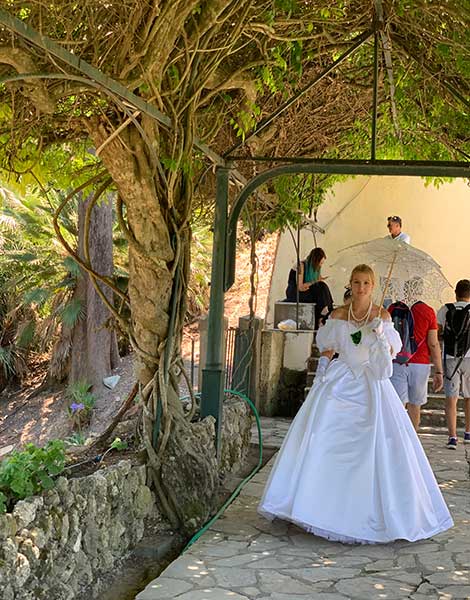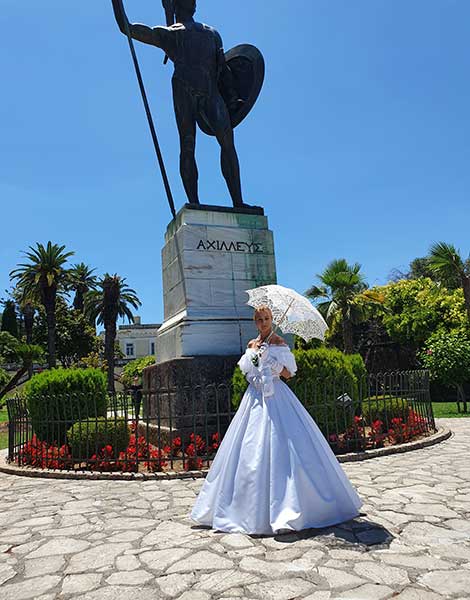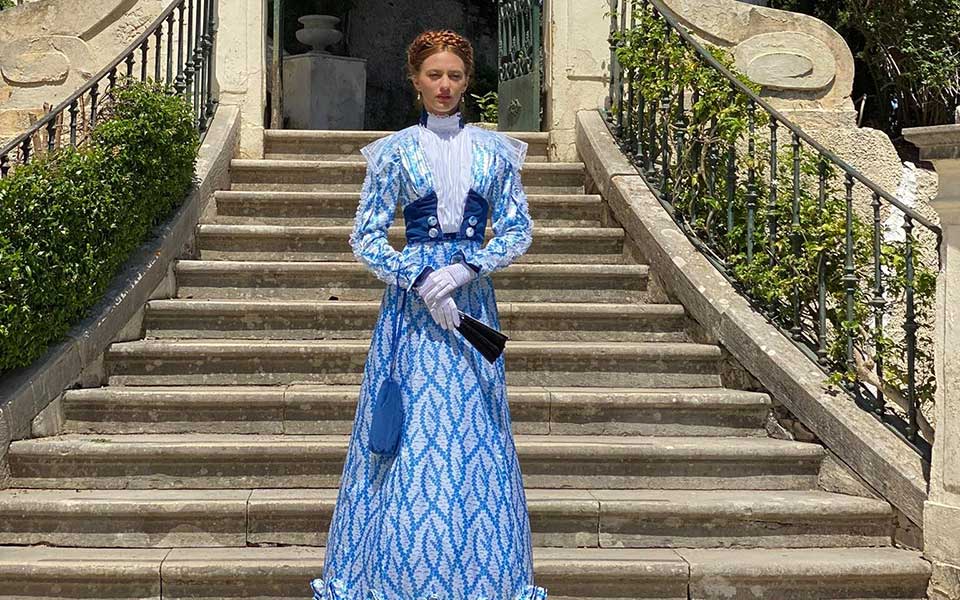You observe her walking past you, holding her lacy white umbrella that casts a shadow on her face to keep out the hot rays of the sun. Her gait is silent, you only hear the slight ripple made by her heavy, embroidered, off-white dress that bears all the glamour of Corfu’s beloved Empress Elizabeth of Austria, or Princess Sisi, as she was popularly known.
This mesmerizing image, which transports you to another era and is reminiscent of a fairy tale, can be experienced by visitors at the Achilleion Palace in Corfu, one of the island’s most impressive architectural masterpieces.
In this beautiful mansion, built by Princess Sisi, you can see her “apparition” floating gracefully through the gardens, among the beautiful sculptures and statues of Greek mythological heroes and her beloved Achilles. She pauses before the colossal statue of the demigod Achilles and smiles at all those who come to admire it while stealing all their glances and drawing them in to follow her to the statue of the “Dying Achilles.”
A melody, played on piano and violin, closely follows her every step. When you approach her, you realize that she is a beautiful model who has all the allure of Princess Sisi and that she is so deeply immersed in her role that it feels as though she were a princess herself.
“Wearing one of Princess Sisi’s dresses makes me feel like a princess too; it’s a unique sentiment, and people feel like they are watching the princess herself walking through the Achilleion Gardens. “They smile at me and take my picture because they want to keep that fantasy alive,” says Georgia Miliou, from Kozani, a student of the Department of Archaeology, Library and Museology of the Ionian University, who this summer decided not to return to her hometown and her family, but to stay on Corfu and live this unique opportunity to play the role of Princess Sisi.
Two exact replicas of Empress Sisi’s original toilettes, creations by internationally renowned fashion designer Mónika Czédly, are already on display at the Achilleion. These are the replicas of the “blue gown” and the “white gown,” which was the Princess’s favorite.
The original “blue gown” was auctioned in 2012 in Vienna. Itdates to 1890 and was part of the Empress’s wardrobe for Corfu.
“We know this from the label on the back of the neck of the dress, with the characteristic embroidered crowned dolphin, which appears on all the dresses from the special wardrobe for Corfu worn by the princess,” the director of the Achilleion Museum, Anastasios Diavatis, says.

© AMNA

© AMNA
“The copies of Princess Sisi’s dresses were first presented early this summer in the gardens of Achilleion, by the fashion designer Mónika Czédly herself, who is currently showing 28 of Sisi’s dresses at the Halbturn Palace in Austria, while in August the princess’s pink gown is expected to arrive at the Achilleion.
Princess Sisi’s original “pink gown” dates to 1880, according to the Austrian museum. It is a particularly novel dress; it is presumed that it was designed with changes so that the Empress could wear it throughout the seasons.
All the gowns, exact replicas of the princess’s original toilettes, are expected to be shown, Diavati says, around the halls of the Achilleion, through the presence of Princess Sisi “in the flesh” in her beloved mansion, where she spent at least six months per year.
As for the designer, Mónika Czédly, who “brought Princess Sisi to life,” founded the D’Elia Salon, a Hungarian family business that has been designing and creating unique toilettes, since 1989. She’s become famous for creating the impeccably authentic replicas of Empress Elisabeth of Austria’s clothes.
Empress Elizabeth was considered one of the most beautiful women in the world and stood out for her style and her view of fashion, which was highly unconventional.
The styling and curating of the presentation of the models in the Achilleion gardens was realized by the well-known Corfiot designer Dora Desyllas, while live violin and piano music in the peristyle of the palace is performed by students of the Department of Music Studies of the Ionian University, which maintains a close collaboration with the Achilleion Museum.
[AMNA]












